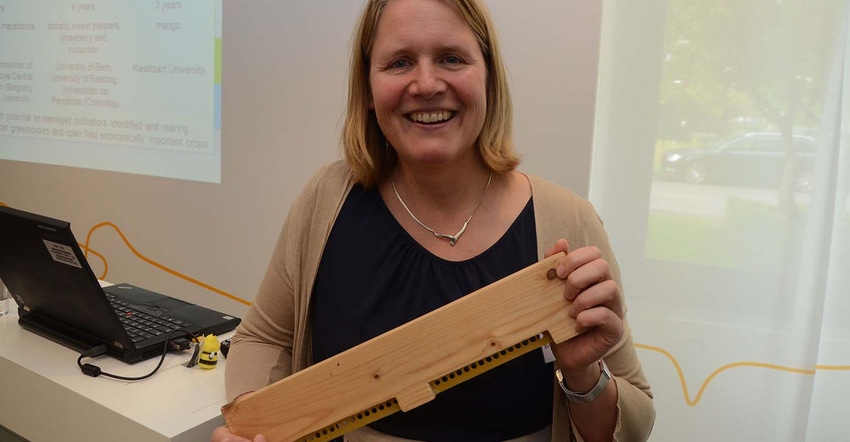
Many beekeepers and farmers are familiar with the varroa destructor – the parasitic mite that essentially sucks the life out of honey bees, transmits diseases, and is considered a major contributor to colony collapse around the world. Several potential solutions have been in the works in the last few years, and this year, Bayer Bee Care registered a new tool that may give beekeepers in Europe a simple way to prevent the varroa mite from spreading using an already-existing active ingredient.
During a tour of its Bayer Bee Care Center as part of the 2017 Future of Farming Summit in Monheim, Germany, Coralie van Brukelen-Groeneveld, global head of Bayer Bee Care, discussed this new tool, called the "varroa gate."
The varroa gate, which Bayer has spent six years to develop and bring to the market, is essentially a plastic strip with holes in it placed over the entrance of the hive.
"The innovative part of it is it's based on an old active [ingredient], in this case flumethrin, but it's embedded in the strip," explains van Brukelen-Groeneveld. "So when the bees fly in and out, they get a little bit of the substance on them, and they distribute it in the hive. Then the substance migrates again to the surface so the next bee also gets its mini dose of the active."
Van Brukelen-Groeneveld notes this way the dosage is minimized and the application is targeted – only used by contact and flying in and out of the hive. Meanwhile, bees from other hives can also benefit by flying in and out, preventing issues with cross-contamination.
"It's cool, it's innovative I think. Now let's see how it's taken up. It's of course based on one active, which is not a good situation in the sense that you need to rotate," adds van Brukelen-Groeneveld. "So you need to rotate with already-existing products on the market so that you ensure a good resistance management so we can have a long-lasting solution and not one that is countered very quickly."
While the varroa gate has been registered for use in Europe, she notes it likely won't be launched in the U.S. – at least for the time being – due to concerns of flumethrin resistance developing.
Learn more about Bayer's Bee Care Center by visiting beecare.bayer.com.
About the Author(s)
You May Also Like






